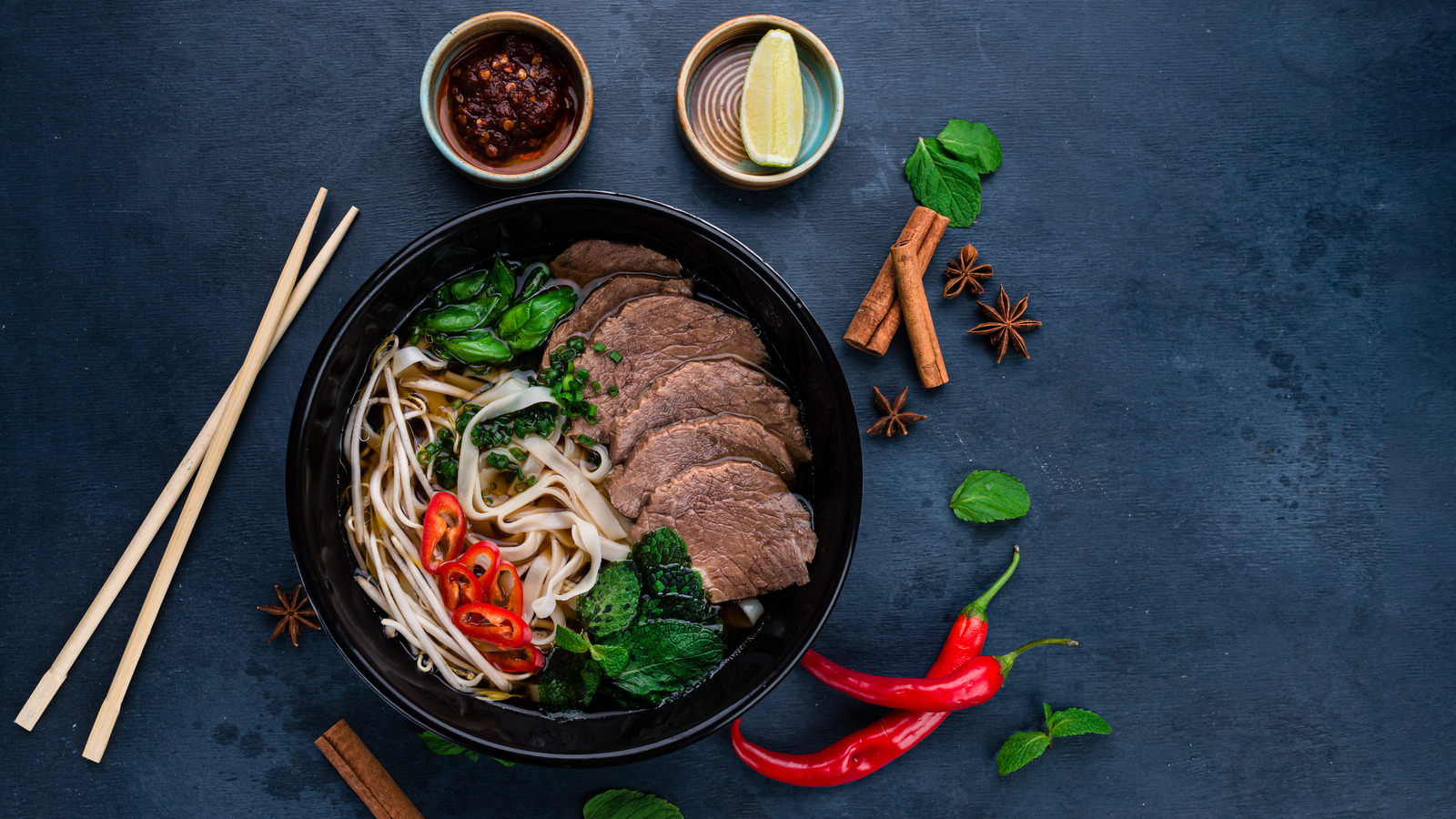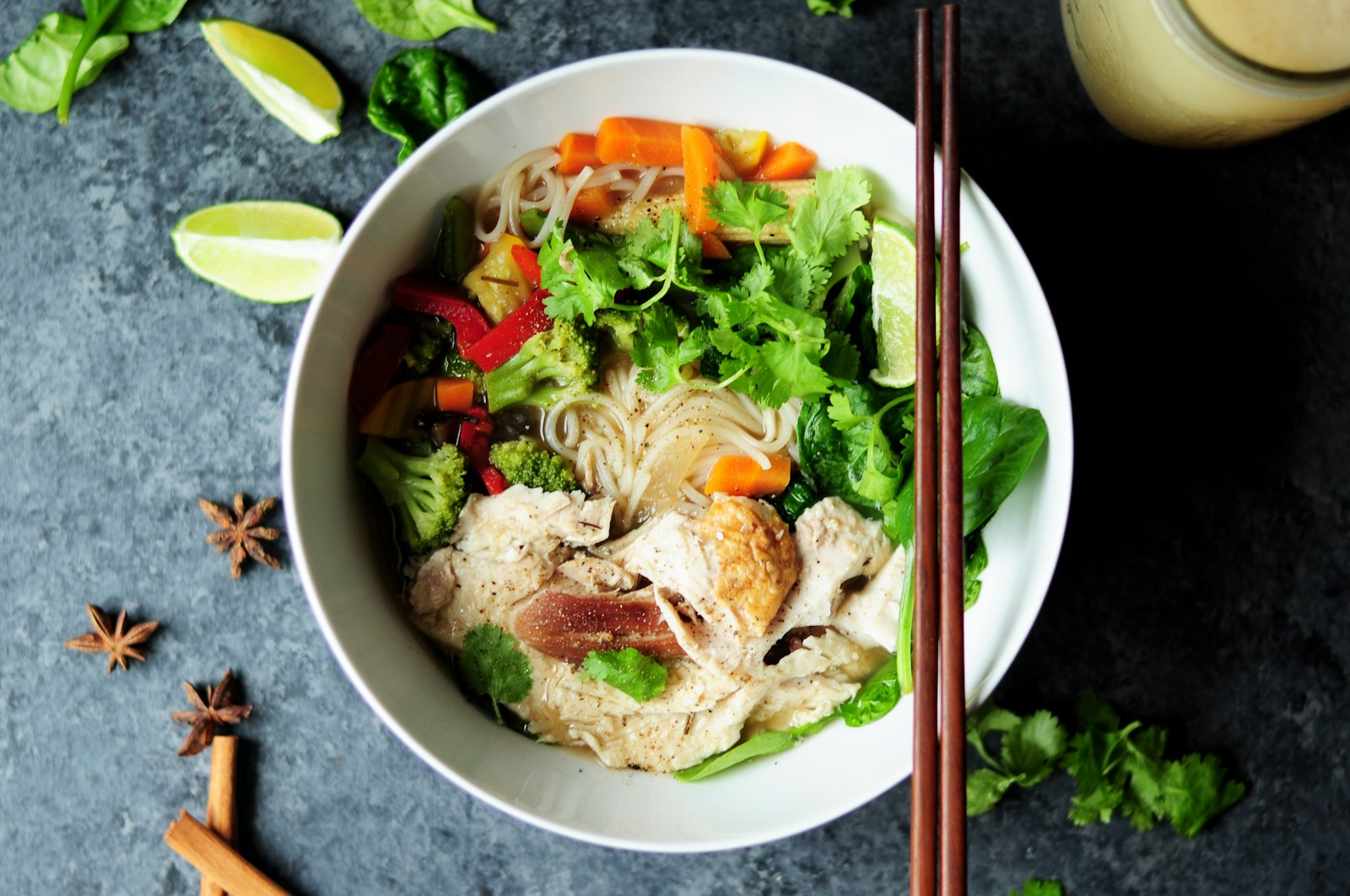おはようございます。KANOです。今回はこちらの記事から。

ラーメンとフォーの違いについて。
understandable
意味 〈行為· 感情などが〉もっともな, 当然の; 〈言葉などが〉理解できる, わかる
While ramen and pho are both Asian noodles in broth, the dishes’ flavors couldn’t be more different, given that ramen is a Japanese dish (by way of China) while pho (pronounced “fuh”) is a Vietnamese dish. These noodle dishes differ quite a bit in terms of ingredients, flavor, and preparation. Still, if you are more familiar with the instant ramen version and are suddenly given a few unlabeled bowls of noodles and asked to identify which is pho and ramen, it is understandable if you hesitated for a few minutes.
https://www.thedailymeal.com/1255688/ramen-pho-difference-soup/
麺の違いで判りそうだけどなあ。
albeit
意味 (かたく)[従属接続詞]…だけれども (although); たとえ…でも (even though).
The broth for pho is more standardized (albeit with some regional variations in Vietnam). It is typically made by slowly simmering beef bones for about 12 hours, per Food Network, but chicken or vegetable broths are also options. The broth incorporates whole spices like cinnamon, star anise, and peppercorns. The broth is clear and light because one of the steps in making the broth is to periodically remove the scum and impurities that rise to the top when boiling the meat and bones. The emphasis on clear broth is also why people prefer to use whole spices that can be strained, rather than ground spices which will cloud the color of the broth. Later proteins and toppings are added to the steaming broth.
https://www.thedailymeal.com/1255688/ramen-pho-difference-soup/
フォーのスープってどんなだったか全く覚えてないw
hearty
意味 [通例[名]の前で]十分な量の〈食事〉
Because of the difference in ingredients and preparation, ramen broth is more hearty and savory while pho broth is lighter, aromatic, and fragrant.
https://www.thedailymeal.com/1255688/ramen-pho-difference-soup/
「飲みごたえがある、パンチが利いてる」って意味合いでいいんだろうな。
indicative
意味 (かたく)[be ~]<物· 事を> 示して, 表して, 暗示して <of>
Besides the broths, the noodles are different in pho and ramen too. Ramen uses wheat-based noodles which are thick and chewy. The toppings are indicative of the dishes’ Japanese origin as it typically includes sliced meat, soft-boiled eggs, scallions, and seaweed.
https://www.thedailymeal.com/1255688/ramen-pho-difference-soup/
no pun intended
意味 しゃれではないですが (自分の言葉が期せずしてしゃれになったとき挿入的にいう) .
The additional topping for pho can also be sliced red chile or Sriracha, depending on one’s preferences. This is an important point to note because a few years ago, readers were outraged when a chef told Bon Appétit that “adding Sriracha or hoisin sauce destroys the (pho) broth’s flavor.” We have all learned from this and the takeaway is, there is no “right” way to cook or eat noodles. It boils down (no pun intended) to individual taste and what is left in our pantries.
https://www.thedailymeal.com/1255688/ramen-pho-difference-soup/


